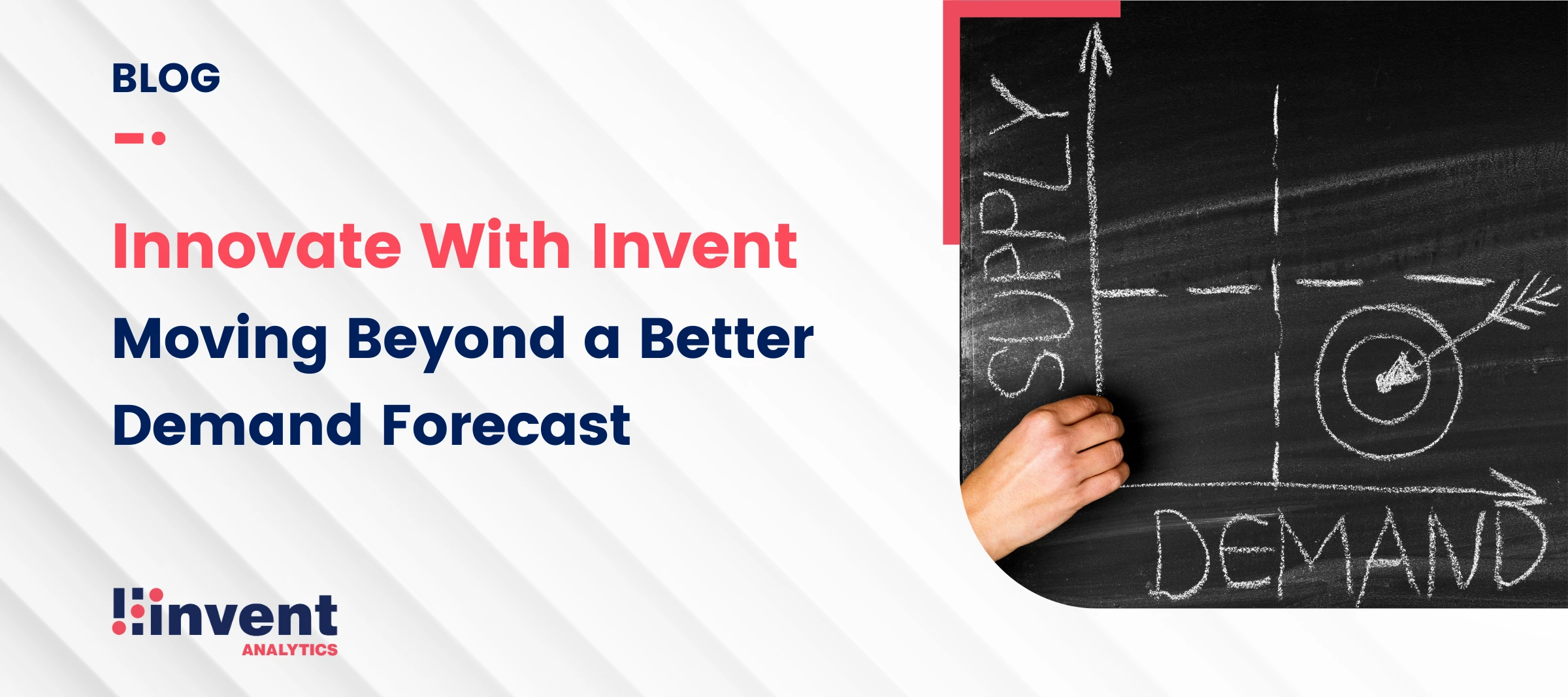
Moving Beyond a Better Demand Forecast
Welcome to the latest chapter of our Innovate With Invent blog series!
Once a month, Invent Analytics hosts an “Innovate with Invent” live huddle session on our LinkedIn page. Retailers across the world tune in to chat about retail trends, challenges, and all things inventory. Afterwards, we recap the highlights here on our blog.
In our last post, we discussed the evolution of omni-channel retailing and what it means for customer expectations. Now, we’ll look at what retailers really need in order to satisfy customer demand with the lowest possible inventory levels (Hint: it’s more than better demand forecast).
Let’s dive in!
Dealing with inventory challenges? A better forecast isn’t the answer.
Every day at Invent Analytics, we have great conversations with leading retailers about their biggest inventory goals and challenges. Across the board, every retailer wants to ensure product availability and boost customer satisfaction—while reducing inventory levels and maximizing profitability. However, their planning teams struggle to bring all these often-conflicting elements together and make the best possible inventory decisions.
What do retailers need to achieve their inventory goals and see a quantifiable financial impact? Ask most planners and they’ll say the same thing: a better demand forecast.
But in reality, improving forecast accuracy isn’t the magic solution planners are hoping for. A better forecast is important, but it’s just the very first step in solving today’s biggest inventory challenges.

Can you turn accurate forecasts into impactful decisions?
Thanks to modern AI-driven demand forecasting solutions, retailers are making big strides in boosting the accuracy and granularity of their forecasts. AI can analyze massive amounts of data and factor in countless variables, helping retailers stay ahead of constantly changing customer demand. In fact, today’s solutions can generate highly accurate short-term and long-term forecasts for every single SKU-location combination. While this may sound like everything planning teams are wishing for, a forecast is only as valuable as what you can do with it.
Unfortunately, most inventory planning teams don’t have tools to translate accurate, detailed forecasts into smart, granular decisions. Planners are trying to manage thousands of SKUs across every online and offline channel, and it’s just not humanly possible to analyze the millions of possibilities, combinations, and scenarios at play. Most teams wind up applying broad rules and decisions to large groups of stores or categories of products. While this approach makes things more manageable, most of the value of their detailed forecasts goes to waste.
On top of that, planning teams usually don’t have the visibility to quantify the financial impact of their decisions. Common KPIs like service level and weeks of supply don’t clearly line up with the business’ wider financial goals, and planners can’t truly understand if and how these KPIs actually improve financial performance.
Given the challenges that come along with typical planner-driven inventory systems, modern retailers are focusing on a better way: profit-optimization.

Moving the needle with a modern approach to inventory
A profit-optimization model means positioning inventory where it will have the best chance of selling for the most money. With this approach, planners move beyond guesswork and looking at large store groups or product categories. Instead, they make smart decisions to optimize inventory levels for every single product, across every single location, every single day.
By thinking about profitability first, planners will finally see a big quantifiable impact on financial performance. Then, other important elements like inventory reduction, product availability and customer satisfaction will fall into place.
Of course, this can't be done manually. By introducing automation and AI, planning teams can analyze their demand forecasts and simulate every possible scenario and outcome to proactively identify the most profitable paths. With the right tools, it’s like having all the right answers in advance. Our team at Invent Analytics has been helping forward-thinking retailers move towards this new profit-optimization model, and we’re happy to talk with you about what this new approach looks like for your retail organization.


